 To enhance service speed and avoid tariff delays, we've opened a US warehouse. All US orders ship directly from our US facility.
To enhance service speed and avoid tariff delays, we've opened a US warehouse. All US orders ship directly from our US facility.
| Cat. No. | Product Name | Field of Application | Chemical Structure |
|---|---|---|---|
| DC36190 | Asukamycin Featured |
Asukamycin, a macrolide polyketide derived from Streptomyces nodosus subsp. asukaensis, exhibits dual antimicrobial and antitumor activities. This natural product demonstrates broad-spectrum antibiotic properties while selectively inhibiting tumor cell proliferation through caspase-8/3-mediated apoptosis induction.
More description
|
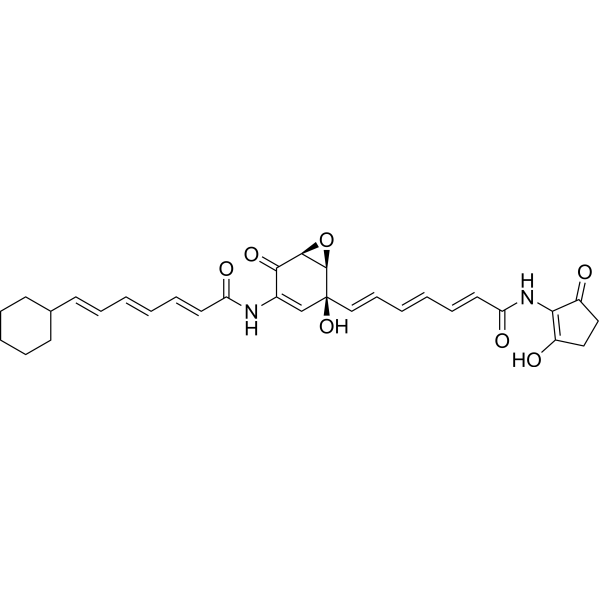
|
| DC72269 | Tri-GalNAc(OAc)3 TFA Featured |
Tri-GalNAc(OAc)3 TFA is a tri-GalNAc ligand that can be used for the synthesis of GalNAc-LYTAC. GalNAc-LYTAC engages the asialoglycoprotein receptor for targeted protein degradation. tri-GalNAc: triantenerrary N-acetylgalactosamine; LYTAC: lysosome-targeting chimera.
More description
|

|
| DC10832 | (E/Z)-4-hydroxy Tamoxifen Featured |
(E/Z)-4-hydroxy Tamoxifen is an active metabolite of tamoxifen that is formed by the action of cytochrome P450 2D6 in human liver.
More description
|

|
| DC70978 | Thalidomide-piperazine hydrochloride Featured |
Thalidomide-piperazine hydrochloride represents a chemically modified derivative of the prototypic immunomodulatory drug, featuring a piperazine moiety that enhances solubility while preserving the compound's unique biological properties.
More description
|
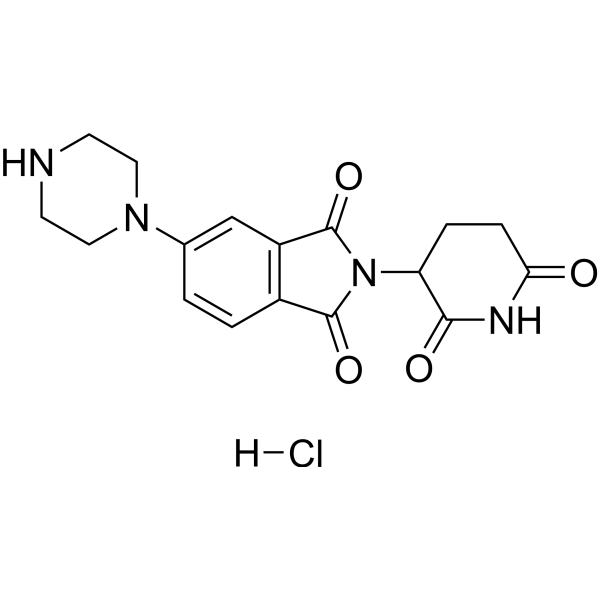
|
| DC67350 | Cyclosporin A acetate-d4 Featured |
Cyclosporin A acetate-d4 is a deuterium-enriched analog of the cyclic undecapeptide immunosuppressant, featuring four strategic deuterium substitutions that improve metabolic stability while preserving its dual mechanism of action.
More description
|
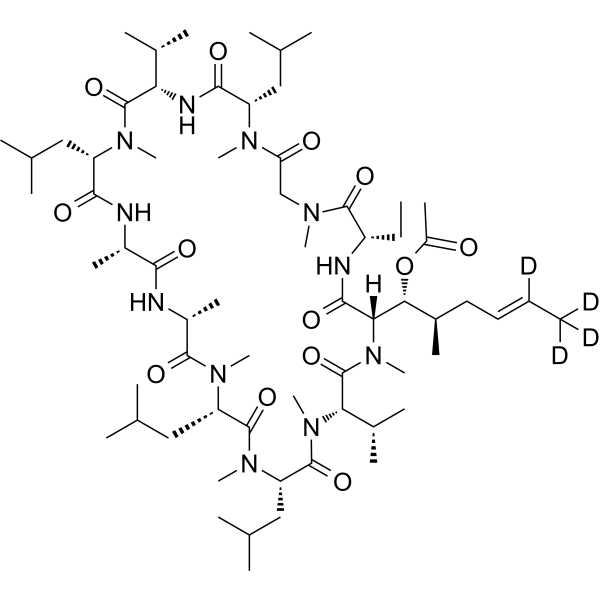
|
| DC67349 | Lenalidomide-d5 Featured |
Lenalidomide-d5 is a deuterium-enriched analog of the clinically validated immunomodulator lenalidomide (CC-5013), featuring five strategic deuterium substitutions that improve metabolic stability while preserving its molecular glue mechanism.
More description
|
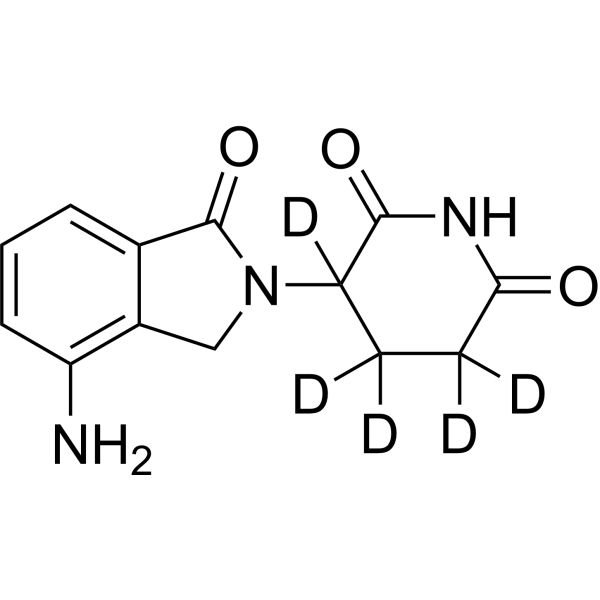
|
| DC67348 | Thalidomide-d4 Featured |
Thalidomide-d4 is a deuterium-enriched analog of the prototypic immunomodulatory drug thalidomide, featuring four strategically positioned deuterium substitutions. This isotopically labeled compound retains the parent molecule's ability to bind cereblon (CRBN) with high affinity (Kd ≈ 250 nM), thereby modulating the activity of the CUL4-RBX1-DDB1-CRBN E3 ubiquitin ligase complex.
More description
|
.gif)
|
| DC65182 | DSG-PEG2000 Featured |
DSG-PEG2000 is used for liposome preparation. DSG-PEG, MW 2,000 has become known for lipid nanoparticle (LNP) preparation for siRNA (small interfering RNA) delivery research. .
More description
|

|
| DC67347 | DMG-PEG 1000 (14:1) Featured |
A methoxy-terminated PEG1000 functionalized with 1,2-dimyristoleoyl-sn-glycerol via an ether linkage. This compound may be used in the formulation of lipid nanoparticles (LNP's) for delivery applications. Reagent grade, for research purpose. Please contact us for GMP-grade inquiries.
More description
|

|
| DC67346 | Jasmonic acid Featured |
Jasmonic acid ((-)-Jasmonic acid) is a plant growth regulator and a derivative of α-Linolenic acid (HY-N0728). Jasmonic acid signaling can also induce the MAP kinase cascade pathway, calcium channel, and many processes that interact with signaling molecules.
More description
|
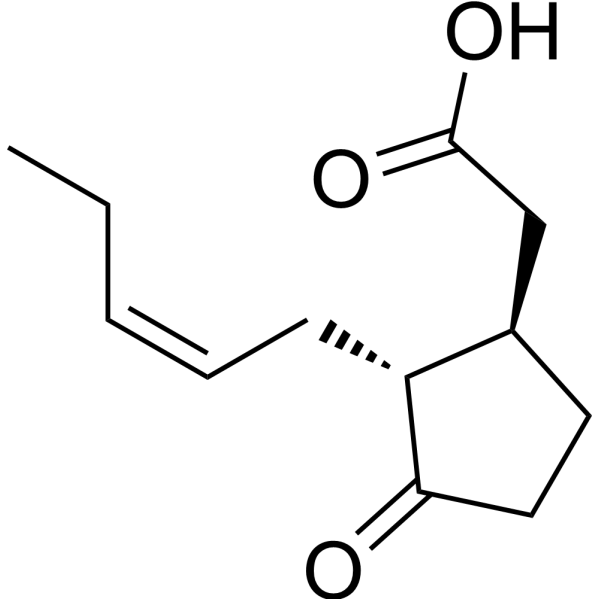
|
| DC47108 | Thalidomide-NH-CBP/p300 ligand 2 Featured |
Thalidomide-NH-CBP/p300 ligand 2 (P-007) represents a novel PROTAC architecture that simultaneously targets CBP and p300 for proteasomal degradation.
More description
|
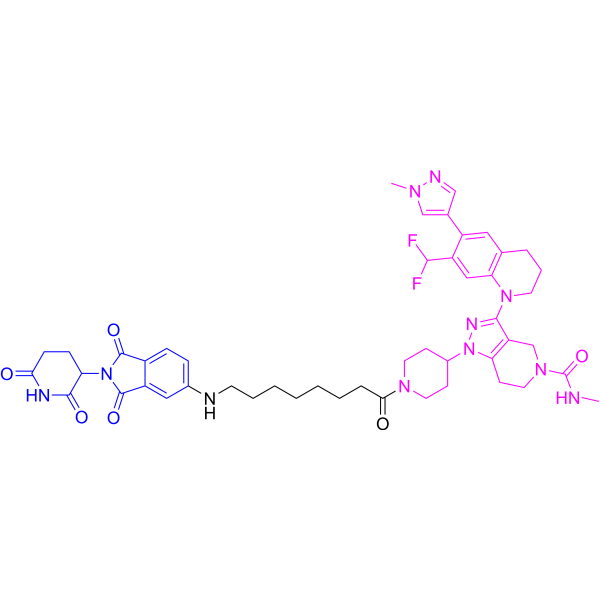
|
| DCS-103 | Lycorine Featured |
Lycorine is a natural alkaloid extracted from the Amaryllidaceae plant. Lycorine is a potent and orally active SCAP inhibitor with a Kd value 15.24 nM. Lycorine downregulates the SCAP protein level without changing its transcription. Lycorine is also a melanoma vasculogenic inhibitor. Lycorine can be used for the study of prostate cancer and metabolic diseases.
More description
|

|
| DC31256 | Mifepristone (RU486) Featured |
Mifepristone (RU-486) is a potent steroidal antagonist exhibiting subnanomolar affinity for progesterone receptors (PR IC₅₀ = 0.2 nM) and nanomolar activity against glucocorticoid receptors (GR IC₅₀ = 2.6 nM). This dual-receptor modulator competitively blocks endogenous hormone binding while inducing distinct conformational changes that prevent coactivator recruitment, demonstrating differential antagonism between PR and GR signaling pathways.
More description
|
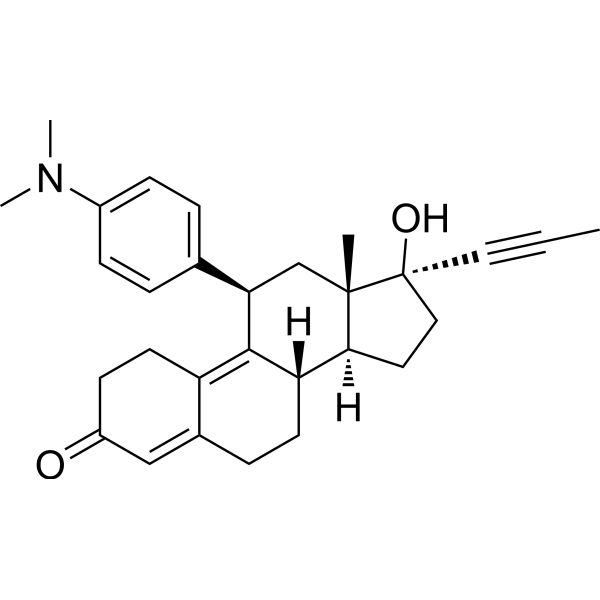
|
| DC67345 | MMH1-NR Featured |
MMH1-NR is a purpose-designed negative control compound for the DCAF16-based BRD4 degrader MMH1, featuring a strategically incorporated non-reactive ethyl group that abolishes degradation activity while maintaining structural similarity.
More description
|
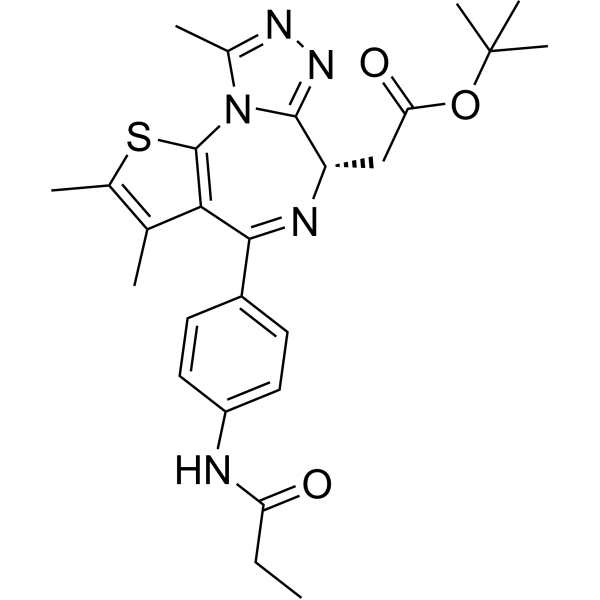
|
| DC67344 | Pomalidomide-d3 Featured |
Pomalidomide-d3 is a stable isotope-labeled analog of the clinically important immunomodulatory drug Pomalidomide, where three hydrogen atoms are replaced with deuterium.
More description
|
.gif)
|
| PR0049567 | BTX-7312 Featured |
BTX-7312 is a cereblon-based SOS1 bifunctional degrader and a molecular glue. BTX-7312 reduces downstream signaling markers pERK and pS6 and shows antiproliferative activity in various KRAS-mutated cells.
More description
|
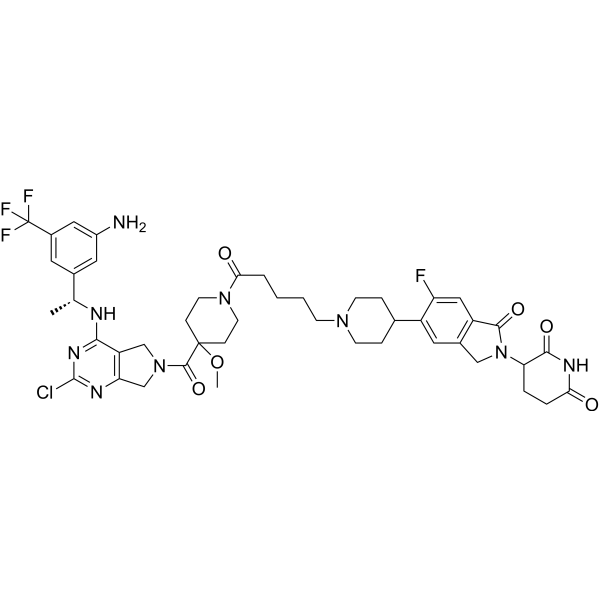
|
| DC67342 | BRD4 degrader-1 Featured |
BRD4 Degrader-1 (Compound ML 1-50) represents a novel class of monovalent, covalent molecular glues that selectively degrade bromodomain-containing protein 4 (BRD4) through an E3 ligase-dependent mechanism. Unlike traditional bivalent PROTACs, this compound utilizes a unique covalent binding strategy to recruit the DCAF16 E3 ubiquitin ligase, inducing potent degradation of both BRD4 long (BRD4-L) and short (BRD4-S) isoforms in cellular systems.
More description
|
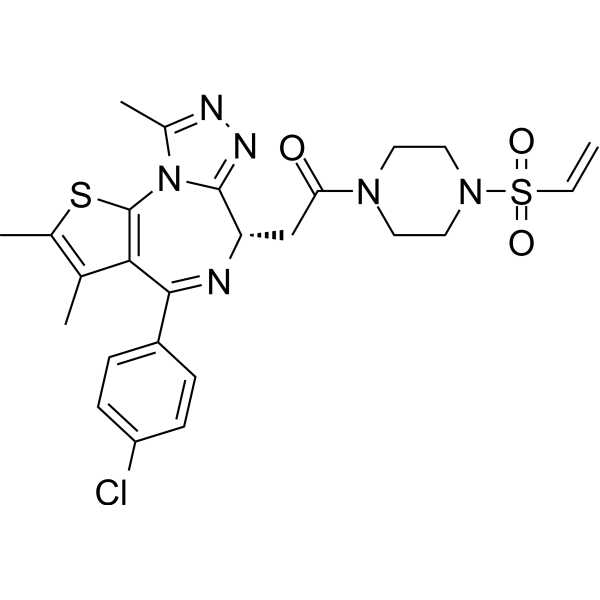
|
| DC49208 | PROTAC(H-PGDS)-7 Featured |
PROTAC(H-PGDS)-7 represents a breakthrough in targeted protein degradation, achieving unprecedented picomolar efficacy (DC50 = 17.3 pM) against hematopoietic prostaglandin D synthase (H-PGDS).
More description
|
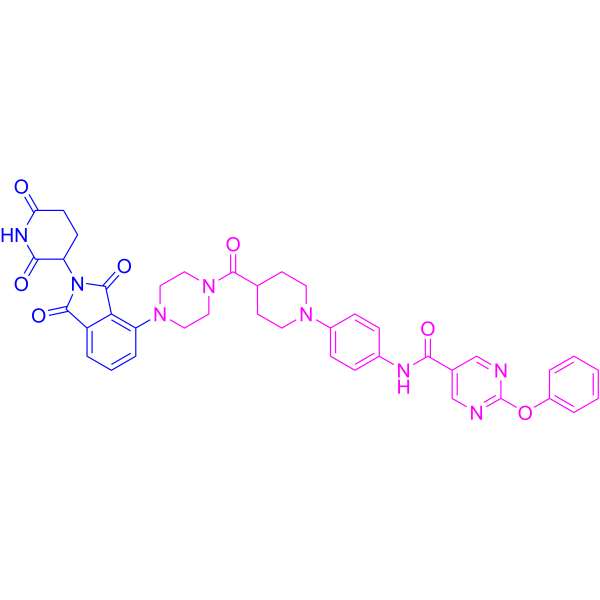
|
| DC67341 | MMH2-NR Featured |
MMH2-NR serves as an essential negative control compound for MMH2, a novel DCAF16-dependent BRD4 degrader. While MMH2 mediates targeted protein degradation by recruiting the CUL4-DCAF16 E3 ligase complex to bromodomain-containing protein 4 (BRD4), MMH2-NR is structurally analogous but lacks degradation activity, making it critical for mechanistic validation.
More description
|
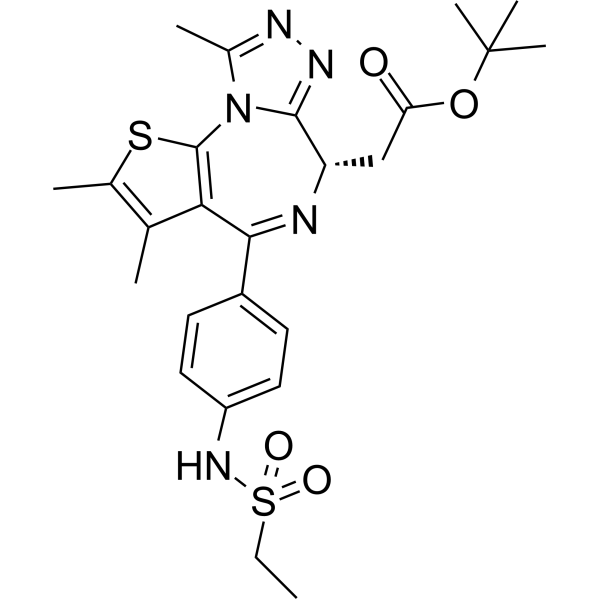
|
| DC60624 | OPB-171775 Featured |
OPB-171775 represents a breakthrough in GIST treatment as a first-in-class, non-tyrosine kinase inhibitor (non-TKI) compound that demonstrates potent antitumor activity independent of KIT mutation status. Unlike conventional TKIs that target oncogenic kinases, OPB-171775 operates through an innovative mechanism by orchestrating a protein-protein interaction between phosphodiesterase 3A (PDE3A) and Schlafen 12 (SLFN12).
More description
|
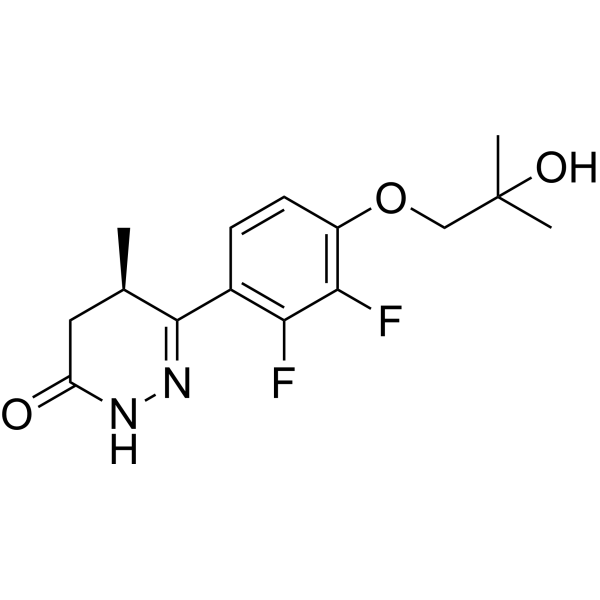
|
| DC67340 | Naphthyridine carbamate dimer Featured |
Naphthyridine Carbamate Dimer (NCD) is a synthetic DNA molecular glue engineered to induce programmable structural rearrangements in functional DNA. Unlike conventional small-molecule binders, NCD operates by non-covalently crosslinking specific DNA sequences, enforcing conformational changes that modulate DNA’s biological activity.
More description
|
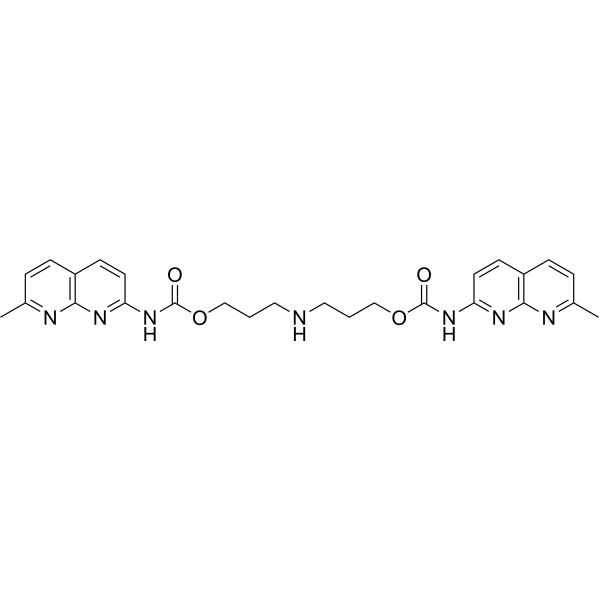
|
| DC67339 | PLX-3618 Featured |
PLX-3618 is a targeted molecular glue that induces the degradation of BRD4, a key epigenetic regulator implicated in cancer. It achieves potent BRD4 degradation (DC50 = 12.2 nM) by recruiting the E3 ubiquitin ligase adapter DCAF11, which tags BRD4 with polyubiquitin chains for proteasome-mediated destruction.
More description
|
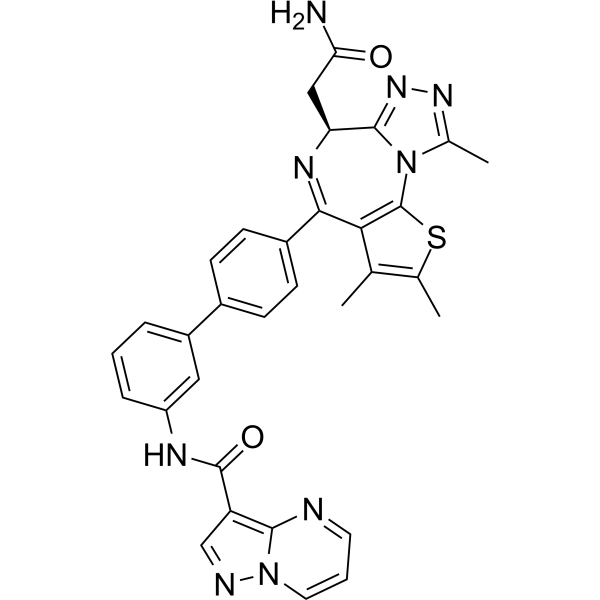
|
| DC67338 | Pan-RAS-IN-2 Featured |
Pan-rasin-2 (Compound 6A) is a novel molecular glue that selectively targets RAS, a critical oncoprotein frequently mutated in cancers. It exhibits potent anti-proliferative effects in RAS-driven cancer cell lines by disrupting oncogenic signaling.
More description
|
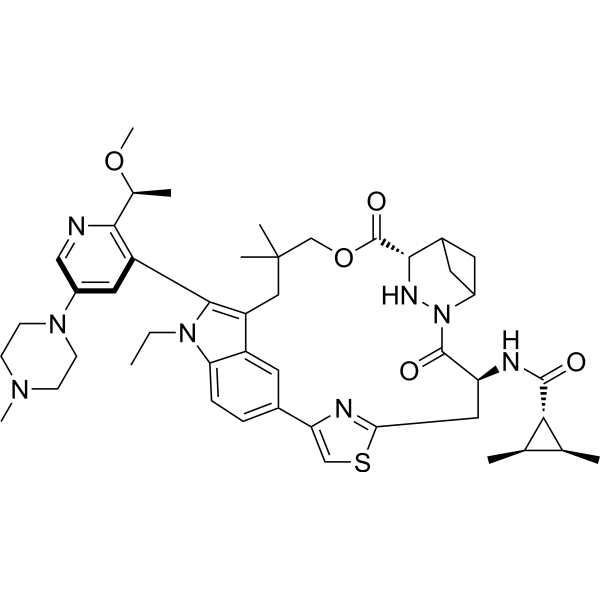
|
| DC74222 | XEN 602 Featured |
XEN-602 represents a breakthrough in DMT1 pharmacology as a picomolar-range inhibitor of divalent metal transporter 1 (SLC11A2), demonstrating unprecedented selectivity for manganese transport blockade (IC₅₀ = 300 pM in HEK293 cells). This structurally optimized small molecule achieves complete suppression of DMT1-mediated Mn²⁺ uptake while maintaining exceptional target specificity, as evidenced by minimal interference with other metal transporters. Its unmatched potency enables precise interrogation of DMT1's physiological roles and therapeutic exploration for manganese dysregulation disorders.
More description
|
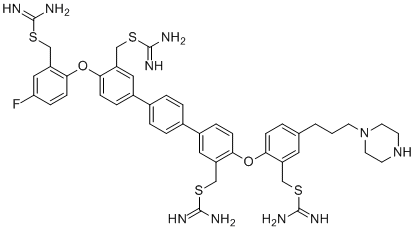
|
| DC67336 | HbF inducer 2 Featured |
HbF inducer 2 is an orally bioavailable molecular glue that selectively degrades the WIZ transcription factor (DC50 = 13 nM in human erythroid precursors) and upregulates fetal hemoglobin (HbF) expression (EC50 = 100 nM). By inducing WIZ proteolysis, it disrupts the γ-globin repressor complex, demonstrating promising pharmacokinetics in cynomolgus monkeys for potential β-hemoglobinopathy therapy.
More description
|
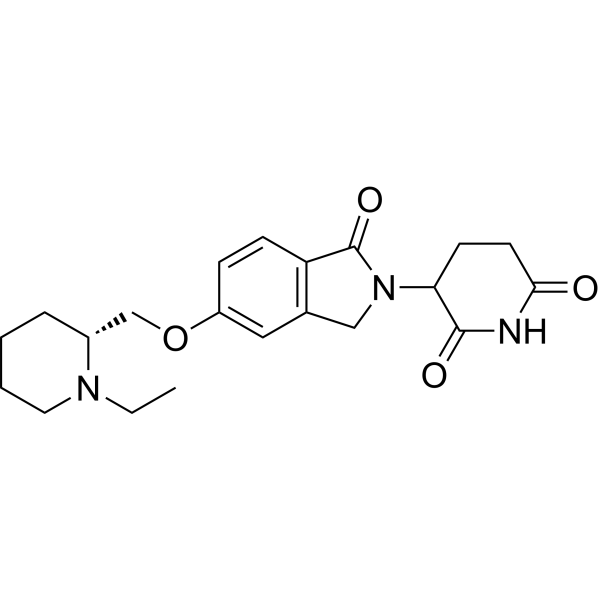
|
| DC71590 | (Rac)-CFT7455 Featured |
(Rac)-CFT7455 is a potent, racemic small-molecule degrader of the zinc finger transcription factors IKZF1 (Ikaros) and IKZF3 (Aiolos), operating through ubiquitin-proteasome-mediated degradation. It demonstrates exceptional cellular potency, with a GI50 of 0.05 nM in NCI-H929.1 cells. As the racemic form of CFT7455, it retains the same anticancer activity by selectively targeting IKZF1/3 for proteasomal destruction.
More description
|
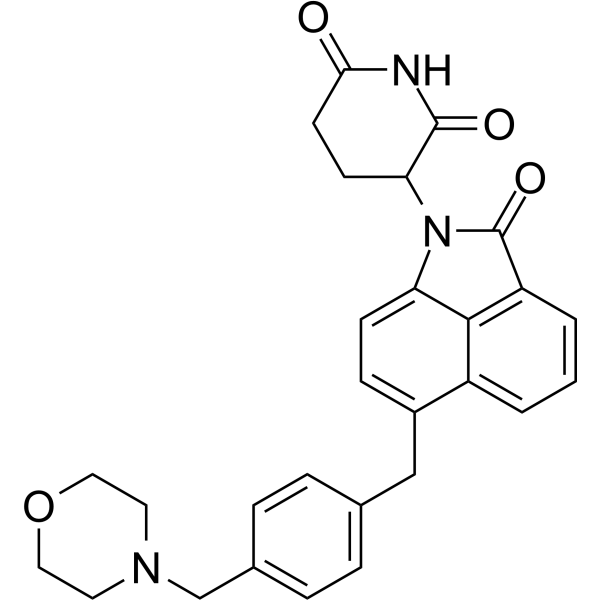
|
| DC66608 | BMS-986397 Featured |
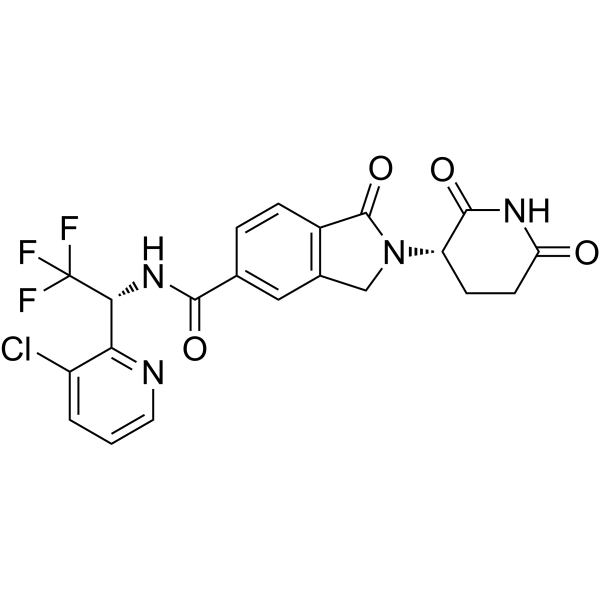
|
|
| DC67334 | Tz-Thalidomide Featured |
Tz-Thalidomide is a tetrazine-functionalized derivative of thalidomide (HY-14658) designed for targeted protein degradation applications. This bifunctional molecule serves as an E3 ligase ligand while maintaining binding affinity for BRD4, with IC50 values of 46.25 μM (BRD4-1) and 62.55 μM (BRD4-2).
More description
|
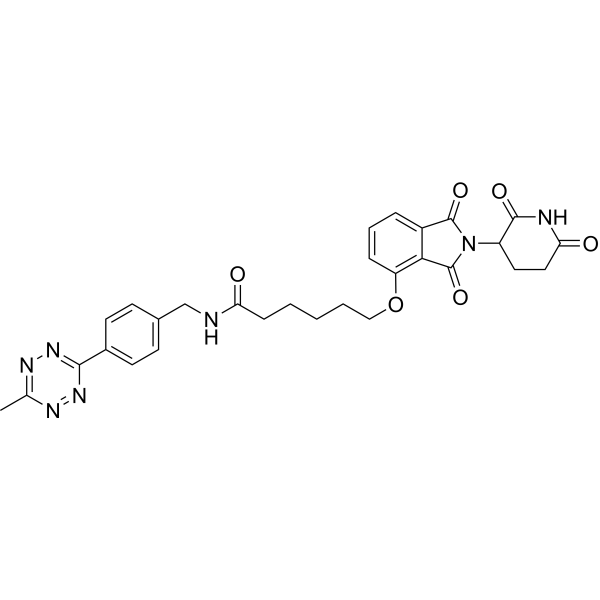
|
| DC60634 | LL-K12-18 Featured |
LL-K12-18 is a highly potent dual-site molecular glue that induces the formation of the CDK12-DDB1 complex, exhibiting an EC50 of 0.37 nM. It demonstrates 80-fold greater potency than SR-4835 in MDA-MB-231 cells and a remarkable 307-fold increase in potency (EC50 = 0.03 nM) in MDA-MB-468 cells, while its degradation efficiency (DC50 = 0.38 nM) is 50-fold enhanced.
More description
|
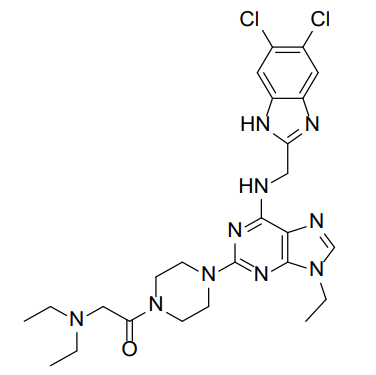
|
| DC71971 | SJPYT-195 Featured |
SJPYT-195 is a potent cytotoxic degrader of GSPT1, serving as a valuable compound for PROTAC (proteolysis-targeting chimera) synthesis and targeted protein degradation research.
More description
|
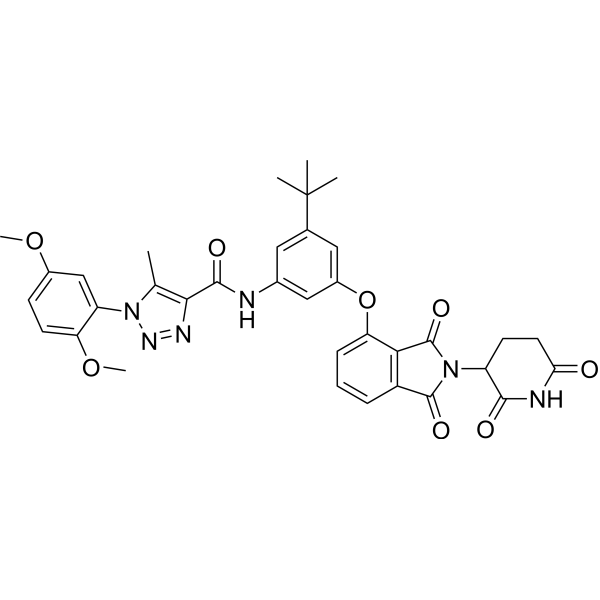
|